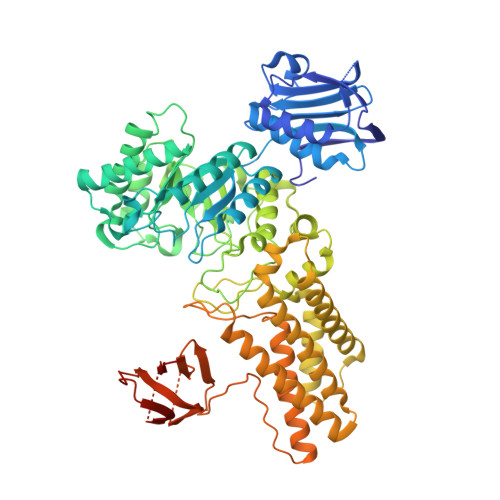Molecular Basis for Inhibition of Gh84 Glycoside Hydrolases by Substituted Azepanes: Conformational Flexibility Enables Probing of Substrate Distortion.
Marcelo, F., He, Y., Yuzwa, S.A., Nieto, L., Jimenez-Barbero, J., Sollogoub, M., Vocadlo, D.J., Davies, G.J., Bleriot, Y.(2009) J Am Chem Soc 131: 5390
- PubMed: 19331390
- DOI: https://doi.org/10.1021/ja809776r
- Primary Citation of Related Structures:
2W66, 2W67 - PubMed Abstract:
Here we report the synthesis of a series of polyhydroxylated 3- and 5-acetamido azepanes and detail the molecular basis of their inhibition of family 84 glycoside hydrolases. These family 84 enzymes include human O-GlcNAcase, an enzyme involved in post-translational processing of intracellular proteins modified by O-linked beta-N-acetylglucosamine residues. Detailed structural analysis of the binding of these azepanes to BtGH84, a bacterial homologue of O-GlcNAcase, highlights their conformational flexibility. Molecular mechanics and molecular dynamics calculations reveal that binding to the enzyme involves significant conformational distortion of these inhibitors from their preferred solution conformations. The binding of these azepanes provides structural insight into substrate distortion that likely occurs along the reaction coordinate followed by O-GlcNAcase during glycoside hydrolysis. This class of inhibitors may prove to be useful probes for evaluating the conformational itineraries of glycosidases and aid the development of more potent and specific glycosidase inhibitors.
Organizational Affiliation:
UPMC Univ Paris 06, Institut Parisien de Chimie Moléculaire, UMR CNRS 7201, Equipe glycochimie, C181, 4 place Jussieu, 75005 Paris, France.

















